
If you didn’t manage to watch the Christmas Eve “Great History Quiz” then here it is from YouTube:
[Read More...]
If you didn’t manage to watch the Christmas Eve “Great History Quiz” then here it is from YouTube:
[Read More...]
With a giant 40 page special section, and over 80 pages in total, it’s only when you put together a magazine featuring Elizabeth I that you realize how many portraits of the queen there are, how many different “personalities” she showed, how clever a ruler she was, and how long her reign was
[Read More...]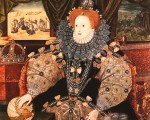
Fashion has had innumerable iterations throughout the centuries, with the Renaissance bringing about not just changes in thinking, art and education, but also clothing style. And along with new clothing styles came sumptuary laws, which created strict visual distinctions between the different classes. There were also restrictions on who could wear which fabrics.
The lower classes wore linen or wool; cotton was not allowed to be imported into England so as to protect the wool trade. The upper classes enjoyed the luxury of silk, brocade, velvet, and satin. Henry VIII passed his first sumptuary laws in 1510, shortly after ascending the throne. Given that clothing was an automatic identifier of who was what class, Henry wished to keep the status quo in place, despite the rising wealth of the merchant class. Mary I continued this trend, as did Elizabeth I. These same sumptuary laws also allowed the Tudor monarchs to collect fines and bestow special status on favorites.
[Read More...]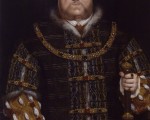
On 30th December 1546, Henry VIII signed his last will and testament, authorising changes he’d instructed William Paget to make on his behalf on 26th December 1546.
You can find a transcript of Henry VIII’s will from Letters and Papers below, but I’d highly recommend Suzannah Lipscomb’s book The King is Dead as it guides the reader through the last few months of Henry VIII’s death and argues that Henry was in control right to the end and that his will reflected his wishes and not those of the Reformists surrounding him. It is a wonderful read and also contains a transcript of the will.
[Read More...]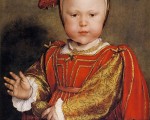
How much can you remember about the births and birthdates of the Tudor monarchs? Test your knowledge with this fun quiz.
[Read More...]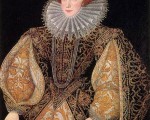
Author Adrienne Dillard, who has done extensive research on Lettice’s family, the Careys and Knollys, has written this excellent bio of Lettice. Thank you so much to Adrienne.
Per Francis Knollys’ Latin Dictionary entry,* Lettice Knollys was born in 1543 on the Tuesday present after All Hallows’ Day, or November 8, 1543, most likely at the Knollys’ family home at Rotherfield Greys in Oxfordshire. Lettice’s brilliant red hair and pale complexion may have come from her close connections to the royal family. Her mother, Catherine Carey, was Anne Boleyn’s niece and Elizabeth I’s cousin. Some historians have debated whether Catherine was the product of Mary Boleyn’s affair with King Henry VIII, but it has never been proven and rests only on circumstantial evidence. Lettice was the third child and second daughter born out of a possible sixteen, but more likely fourteen, children born to Catherine and Francis.
[Read More...]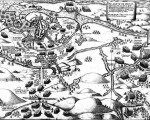
Christmas Eve, 1601. The setting: a sleepy, south-eastern port town in Ireland. The Nine Years War of Ireland had been raging since 1594, with the English fighting to have control of Ireland under Elizabeth I of England. The unorganized Irish had won several battles and skirmishes against the English, frequently through the use of ambush. But in 1601, trained Spanish troops arrived, giving great hope to the Irish.
Ireland was a Catholic country and Catholic Spain had recently suffered the humiliating defeat of their Armada by Elizabeth I in 1588. The Spanish, led by Don Juan del Áquila, arrived at Kinsale in September of 1601, with Kinsale being the poorest choice to undergo a siege, as it was situated in a hollow and did not have strong walls. The Spanish were forced to land at Kinsale due to poor weather. The English experienced some relief when they learned that the Spanish fleet was headed for Ireland and not England.
[Read More...]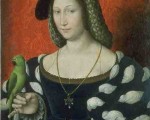
Marguerite de Navarre, also known as Marguerite d’Angoulême, was born on 11 April 1492 and died on 21 December 1549. She was sister to Francis I of France and queen consort of Henri II of Navarre. Most importantly, Marguerite was a brilliant mind and an author.
Marguerite’s early life was spent in Cognac and Blois, and was joined by her little brother, the future Francis I of France, in 1494. Sadly, Marguerite’s father, Charles d’Angoulême, passed away in 1494. Much the benefit of the precocious Marguerite, her mother was now head of the household and saw to it that her daughter received a proper education. Marguerite enjoyed learning about classical philosophy and also spent time carefully reading the Bible. This early intellectual training prepared Marguerite for deep, concerted critical thinking, which later enabled her in her literary career.
[Read More...]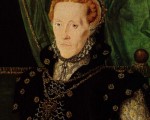
On this day in 1545, William Cecil, the future Baron Burghley, married his second wife, Mildred Cooke (1526-1589), eldest daughter of Sir Anthony Cooke, Edward VI’s tutor.
[Read More...]
On 21st December 1495, Jasper Tudor, 1st Duke of Bedford and 1st Earl of Pembroke, died at his manor at Thornbury at the age of around sixty-four. His entrails were buried at the parish church at Thornbury and the rest of his remains were laid to rest at Keynsham Abbey, according to the instructions he left in his will of 15th December.
[Read More...]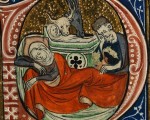
As it’s very nearly Christmas, I thought it would be fun for you to test your knowledge of Tudor Christmas traditions.
Good luck!
[Read More...]
Thank you for all our amazing members who were able to make it online to the live-chat last night with Melanie V. Taylor. We had a lively discussion about all things, including recipes(!) and of course Tudor artwork and artists.
[Read More...]
In this week’s “Claire Chats” video, Claire discusses modern-day British Christmas traditions.
[Read More...]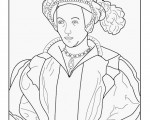
The lead-up to Christmas can be a very exciting time but it can also drag, particularly when you've got rather excited children at home or work has finished for the holiday. I decided that it might help members to collate some links of Tudor themed pastimes to help keep you and/or your children occupied. So, here you are and please feel free to add ideas in the comments section.
See my Claire Chats video on Indoor Tudor Games - click here or use these links for ideas, instructions and templates:
To make paper dolls of Henry VIII's six wives, simply go to http://www.royalpaperdolls.com/HenryDollPage.htm, choose the wife you want and then print out the dolls to dress and doll clothes images.
Colouring in is meant to be relaxing, isn't it, but it's also something to keep the children busy while indoctrinating them at the same time. Find colouring pages to print out at:
Fancy adding some traditional Tudor and Elizabethan foods and drink to your own Christmas traditions? Here are some recipes to help you and you can also check out the December issue of Tudor Life magazine for more and, of course, my Claire Chats video on Lambswool/Wassail.
There are lots of videos on this website, from my weekly Claire Chats videos on lots of different Tudor topics, to expert talks and documentaries. Click on the links below to browse the categories:
And don't forget to catch up on your reading with our archives of past issues of Tudor Life magazine - click here or have fun with the archives of weekly quizzes - click here.
Phew! That should keep you busy!
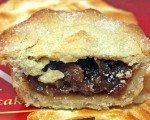
During the Tudor period the four weeks leading up to Christmas was known as Advent and consisted of fasting and a limited range of foods which were allowed to be eaten; a tradition that is still practised by some today. Christmas Eve was particularly strict and people were not allowed to eat eggs, cheese or meat. However when Christmas day came around the Tudors were allowed to cast off the food restrictions and enjoy a lavish feast!
[Read More...]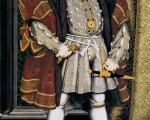
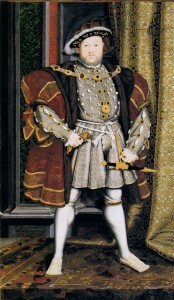
Henry VIII, after Holbein
I'm delighted to welcome Tudor Life magazine contributor and freelance academic Kyra Kramer to the Tudor Society today as part of the booktour for her latest book, Henry VIII's Health in a Nutshell. I hope you enjoy her article.
MadeGlobal Publishing is giving away a paperback copy of Henry VIII's Health in a Nutshell to one lucky commenter here at the Tudor Society. Simply leave a comment on this post saying what you'd like to know for sure about Henry VIII's health. Leave your comment by midnight on 24th December. A winning comment will be picked at random and the lucky winner contacted via email after Christmas.
Henry VIII was fat. Well, he was only fat during the last dozen or so years of his life, but most people have forgotten his 40 years of god-like athleticism because all the most iconic images of him show the "fat Henry" of popular imagination.
Henry has become associated with fat. It is a rare documentary or book that does not bring up the fact that Henry eventually had a 54 inch waist. It's reputed that three men could fit in his doublet. People were so confused that the Henry depicted in The Tudors and Wolf Hall was thin that newspapers ran articles explaining that the king was only obese in his later years. Moreover, Henry's ill health is implied to be a manifestation of his weight, and therefore his sloth and gluttony, the end result of his failure to control himself. Henry's fat thus fits the cultural narrative of the kind of impulsive, self-serving man who would behead his wives and leave his church. Fat Henry is analogous with Tyrant Henry.
With Henry's reputation for fat has come increased speculation that he had type II diabetes. Not only is he theorized to have had type II diabetes, this disease is becoming increasingly mentioned as the underpinning causal factor in Henry's ill health, from his ulcerous legs to his reproductive difficulties. Where syphilis once reigned supreme in the court of Henry-had-this, type II diabetes has arisen to usurp the position of illness most often ascribed to Henry VIII. Perhaps more people think Anne Boleyn had six fingers, but Henry the type II diabetic is definitely becoming a Tudor "known".
In my latest book, Henry VIII's Health in a Nutshell, the king's weight is important in my examination of the theory that he had type II diabetes. Frankly, I think it is likely that Henry did develop this disease at the end of his life... but not in the way people believe and not as a factor in the majority of his ailments. The popularity of type II diabetes as a scapegoat for nearly all Henry's maladies is due more to the fact that the link between adipose tissue and this illness is wildly overestimated by the general public than it is to any valid data. As I explain in the book:
This is probably a shock to most people, since the correlation is implied in almost every media report about type II diabetes or the ‘obesity’ epidemic, but in reality almost half of all type II diabetes sufferers are of normal weight and the large majority of obese people will never develop the disease. Type II diabetes occurs when the body can no longer process insulin correctly, and is a metabolic disease that can strike regardless of the patient's weight. Genetics and poverty, rather than weight or diet, seems to be the biggest factor in type II diabetes... being poor also doubles (or triples) your risk of type II diabetes, even when ALL other factors - including weight - are taken into account. Nevertheless, obesity and type II diabetes are so often studied together that general misinformation linking them remains strong even in the medical community. What can be correlated to both obesity and diabetes is a sedentary lifestyle. Sitting at work and then coming home and sitting some more (usually in front of the TV) "were both associated with significantly increased risk of diabetes in multivariate analyses adjusting for dietary and nondietary covariates"1. Basically, sitting down too much is a bigger risk to your health than almost anything else, including what you eat and what you weigh ... The king did not attain truly gargantuan proportions until after he was bedridden and unable to ride any longer... Henry's sedentary existence would have subsequently encouraged the development of type II diabetes, which would have caused attendant venous ulcers and depression which would have in turn made it harder for Henry to move or get exercise.2 Henry would thus have become trapped in a perpetual circle of worsened health until, wherein his ailments fed and sustained one another in a kind of ‘perfect storm’ that only ended with his death in January of 1547.3
In sum, Henry probably gained weight and developed type II diabetes because he had become ill for some other cause or causes, rather than becoming ill and developing type II diabetes because of his obesity. As long as Henry was still active then his health would not have been adversely affected by his weight, even after he crossed the "severely obese" threshold of 35 BMI.
There is scant evidence that Henry had type II diabetes before the last few years of his life. The arguments for Henry's type II diabetes diagnosis prior to the 1540s are his leg ulcers and his reproductive record. However, the leg ulcers were much more symptomatic of osteomyelitis in both duration and placement than they are of complications of type II diabetes. It wasn't until the king was sedentary that the kind of sore typical to type II diabetes -- venous ulcers on the lower leg -- appeared. Henry's reproductive record does not correspond to type II diabetes either:
Miscarriage due to diabetes is typically linked to the mother having diabetes, not the father. Although superstructure defects in the sperm of male diabetics can increase the chances of a miscarriage in their partners, these miscarriages would occur early in the first trimester because the embryo would be nonviable. The more common side effect of diabetes is erectile dysfunction and low sperm count, which could explain the lack of pregnancies in his marriages to his fifth and sixth wives, but could not account for the frequent pregnancies and subsequent late-term miscarriages experienced by his first two queens.4
Not only did Henry's body not axiomatically give him type II diabetes, it might have been a health advantage. Type II diabetes demonstrates what researchers call the "obesity paradox", in that rather than hurting the patient, excess adipose increases survival rates. As counterintuitive as it seems to the modern reader, overweight people with type II diabetes live longer than normal or underweight people diagnosed with the same illness. Henry's large body mass may have aided his longevity until he crossed the threshold of 30 BMI, or even higher according to some studies.
*I'm aware my facts about weight and health are going to cause some people to blow a gasket. The idea that overweight people live longer than "normal" or "thin" people is causing some people – even those in the "evidence based" medical community - to become very upset. In fact, they get so upset they are even hostile to the research regardless of its statistical validity. This is caused by the cognitive dissonance of a paradigm violation. The paradigm we've grown up with is that fat=bad=shortened lifespan, whereas thin=good=lengthened lifespan. Doctors have grown up in that paradigm too, and it has been presented as an immutable "truth" for decades. People do NOT like having their paradigms shifted. They resist. Evidence that contradicts the "truth" is both suspect and rage-inducing. I've read entire papers discussing the oddity that fat people who don't diet live longer than yo-yo dieters, yet that paper ends with the discursive advice that fat people should go on a diet to get their weight under control or their health will suffer. This means that the internet is chockablock with articles trumpeting that the fact that overweight people live longer is a "lie". Nonetheless, the math bears witness; in metadata studies of obesity there is statistically significant proof that overweight people live longer and exercise is more important for health than being the "correct" weight.
Do make sure you visit Kyra's other stops on her book tour to enjoy her excellent articles and to take part in the giveaways. Here's the schedule:
 Kyra Cornelius Kramer is a freelance academic with BS degrees in both biology and anthropology from the University of Kentucky, as well as a MA in medical anthropology from Southern Methodist University. She is the author of Blood Will Tell: A Medical Explanation of the Tyranny of Henry VIII, The Jezebel Effect: Why the Slut Shaming of Famous Queens Still Matters, and Henry VIII's Health in a Nutshell. Her essays on the agency of the Female Gothic heroine and women's bodies as feminist texts in the works of Jennifer Crusie have been published in peer-reviewed journals. She has also co-authored two works; one with Dr. Laura Vivanco on the way in which the bodies of romance heroes and heroines act as the sites of reinforcement of, and resistance to, enculturated sexualities and gender ideologies, and another with Dr. Catrina Banks Whitley on Henry VIII.
Kyra Cornelius Kramer is a freelance academic with BS degrees in both biology and anthropology from the University of Kentucky, as well as a MA in medical anthropology from Southern Methodist University. She is the author of Blood Will Tell: A Medical Explanation of the Tyranny of Henry VIII, The Jezebel Effect: Why the Slut Shaming of Famous Queens Still Matters, and Henry VIII's Health in a Nutshell. Her essays on the agency of the Female Gothic heroine and women's bodies as feminist texts in the works of Jennifer Crusie have been published in peer-reviewed journals. She has also co-authored two works; one with Dr. Laura Vivanco on the way in which the bodies of romance heroes and heroines act as the sites of reinforcement of, and resistance to, enculturated sexualities and gender ideologies, and another with Dr. Catrina Banks Whitley on Henry VIII.
Ms. Kramer lives in Bloomington, IN with her cute geeky husband, three amazing young daughters, and assorted small yappy dogs garnered from re-homing and rescues. When not working she reads voraciously, plays video games with her family, does cross-stitch, and invents excuses to procrastinate about doing routine house cleaning.
You can read her blog at kyrackramer.com, or follow Kyra Cornelius Kramer on her Facebook page or Twitter.
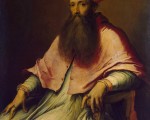
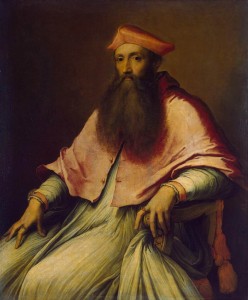
Cardinal Pole
Cardinal Pole died on the very same day as his beloved queen, Mary I. Raphael Holinshed's Chronicles record his death:
Leauing queene Marie being dead & gone, you are to vnderstand and note, that the same euening, or (as some haue written) the next daie after the said queens death,The death of [...]rdinall Poole. Cardinall Poole the bishop of Romes legat departed out of this life, hauing beene not long afore made archbishop of Canturburie: he died at his house ouer against Westminster commonlie called Lambe [...]h, and was buried in Christs church at Can|turburie.
The Chronicles go on to give a not so flattering account of Cardinal Pole's life, accusing him of "barbarous" behaviour and blemishing "the honour of his descent. You can read this account in the 1587 version of The Chronicles at The Holinshed Project.
Diarist and merchant Henry Machyn records how Cardinal Pole's remains were taken on 10th December from Lambeth to Canterbury in preparation for his burial:
The sam mornyng my lord cardenall was [removed from] Lambeth, and cared toward Canturbery with grett [company in] blake; and he was cared in a charett with [banner-]rolles wroth [wrought] with fyne gold and grett baners [of arms,] and iiij baners of santes in owllo [oil].
In Ecclesiastical Memorials, John Strype writes:
Cardinal Pole died the same day that Queen Mary did; and not many hours after her. His last will may be seen in Holinshed's History. Therein he desired his successor would not sue his executors for dilapidations, seeing he had bestowed more than a thousand pounds within these few years in repairing and making such houses as belonged to the see, since he came to it. The overseers of his will were Nicholas Archbishop of York, lord chancellor; Thomas Bishop of Ely; Ed. Lord Hastings, lord chamberlain; Sir John Boxal, the Queen's secretary; Sir Edward Cordal, master of the rolls; Henry Cole, vicar general of the spiritualities.
Strype goes on to describe how there was "a secret report among Papists, abroad soon after, that both Queen Mary and Cardinal Pole, came to their ends by poison but that Dr. Haddon, "a knowing man", put their deaths down to "an infectious fever that the nation then laboured under [...] an outrageous burning fever [...]".
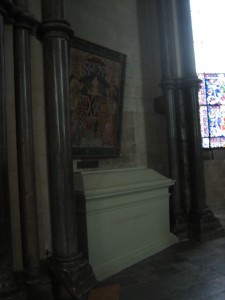
Images: Cardinal Reginald Pole, Archbishop of Canterbury, by Sebastian del Piombo, and tomb of Cardinal Reginald Pole from Wikimedia Commons.

I’ve been talking about Henry VIII’s illegitimate and alleged illegitimate children in my Claire Chats videos recently so it seems appropriate to look at a woman who was the mother of the king’s only acknowledged illegitimate child, his son Henry Fitzroy, Duke of Richmond and Somerset. Over to Sarah…
Elizabeth “Bessie” Blount was the daughter of John Blount and his wife Katherine Pershall. She was born around 1498 at Kinlet Hall. Bessie’s grandmother, through her mother, had been Isabel Stanley, daughter of Sir John Stanley, a distant relative of Lord Thomas Stanley whom had married Margaret Beaufort, Henry VII’s mother. It had been Isabel’s brother Sir Humphrey Stanley whom had arranged the marriage between John Blount and his niece Katherine Pershall when the couple were only young. Sir Humphrey, while quite a rouge was also a Knight of the Body to King Henry VII.
[Read More...]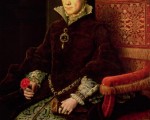
On 14th December 1558, just under a month after her death, Queen Mary I was buried at Westminster Abbey. Although Mary had left instructions in her will for her mother Catherine of Aragon’s remains to be exhumed and brought to London so that mother and daughter could be buried together, her instructions were ignored and Mary was buried by herself at Westminster on 14th December 1558 with just stones marking her resting place.
[Read More...]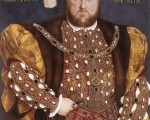
How much do you know about the treaties, alliances and agreements of the Tudor period? Test yourself with this fun quiz – good luck!
[Read More...]
Tudor Christmas festivities were not complete without the Tudor equivalent of punch or sangria: the Wassail or Lambswool, a hot spiced ale or cider drink which was passed around in a communal bowl for everyone to enjoy. I thought I’d have a go at making some Lambswool Wassail, so called because the pureed apple rises to the top and creates a foamy head. I hope you enjoy my video.
[Read More...]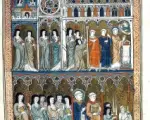
I’m excited to share news of this new online medieval history course which is now available at MedievalCourses.com and which is twenty-module course written by historian and author Toni Mount and narrated by Claire Ridgway (me!). What’s great about this course is that it is online and can be done at your own pace, so no worrying about attending classes at a certain time or missing lectures. Simply download the lectures and listen/read when it’s convenient, or listen online with streaming.
More good news is that MedievalCourses.com is offering Tudor Society members a saving off this course – scroll down to the bottom of this post for more information.
[Read More...]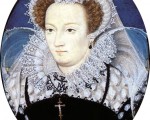
As it’s Mary, Queen of Scots’ birthday today I have added a brief biography of her to our Bios section, which already features brief bios of Henry VII, Henry VIII, Edward VI, Lady Jane Grey, Mary I and Elizabeth I.
[Read More...]
An exhibition telling the story of Shakespeare’s life in London through the paper trail left behind.
Discover the stories behind key moments in Shakespeare’s life, from the birth of the Globe theatre in London to his last days in Stratford-upon-Avon, 400 years ago.
[Read More...]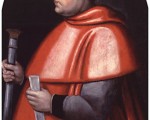
Thank you to author Sarah Bryson for this article on the Amicable Grant, a tax imposed to fund the war against France in 1525.
England had previously been at war with France in 1523 and war against the old enemy was once again proposed in early 1525. In February of that year the French troops had suffered a devastating loss against the Imperial troops of Charles V outside of Pravia. To make matters even worse for the French, their King, Francis I, had been captured in the battle and was now a prisoner of Charles V. When the messenger brought the news of Francis I’s capture to Henry VIII the King is reported to have been likened to the Archangel Gabriel, such was his happiness and excitement at hearing the news. Henry VIII, ever the opportunist, saw another chance at military glory and quickly proposed war against France. The English King believed that the idea to go to war had been blessed by God and, unlike two years previously, he had visions of reclaiming the French throne for England.
[Read More...]